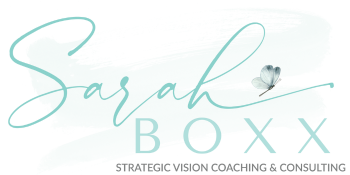“A goal without a plan is just a wish.” — Antoine de Saint-Exupéry
The start of a new year brings an opportunity to reflect, reset, and plan for the road ahead.
For nonprofit leaders, this is more than setting goals—it’s about creating a roadmap that aligns with their mission, prioritizes their resources, and engages their team and stakeholders.
Big-picture planning ensures your organization can tackle challenges and seize opportunities in 2025 and beyond.
Focusing on strategic planning can create a more resilient, impactful organization that thrives in an ever-changing landscape.
The Importance of Big-Picture Planning
Planning is about creating clarity and direction for your team. A well-thought-out plan helps organizations:
- Prioritize Resources: With limited time and funding, focusing on what matters most ensures efforts are impactful and aligned with your mission, reduces burnout, and produces results.
- Increase Stakeholder Confidence: Donors and partners are more likely to invest in an organization with a clear strategy and measurable outcomes. An organization that can answer the question, “Why does your work matter and how do you know?”
- Maintain Focus: A strong plan reduces distractions and keeps teams aligned with long-term goals, even during times of uncertainty. It allows people to take independent action and reduces bottlenecks.
Take Direct Relief, for example. Their meticulous disaster preparedness planning enabled them to respond swiftly to multiple crises in 2024, including wildfires and hurricanes. By having clear priorities and a well-coordinated plan, Direct Relief maximized its impact while maintaining transparency with stakeholders.
How Big Picture Planning Drives Impact
- Guiding Organizational Growth: Planning helps leaders identify areas where their organization can grow sustainably. Whether it’s expanding programs, reaching new audiences, or enhancing internal operations, a clear roadmap ensures that growth aligns with capacity and mission.
- Fostering Collaboration and Engagement: Strategic planning isn’t just a leadership exercise—it’s a team effort. Engaging staff, volunteers, and board members in the process builds buy-in and strengthens organizational culture.
- Staying Agile in a Changing Landscape: A big picture plan provides a foundation for flexibility, allowing organizations to adapt to unexpected challenges while staying focused on their goals.
Big-picture planning is about building an organization prepared to thrive for years. By prioritizing what matters, engaging your team, and staying adaptable, you can create a roadmap that drives impact and inspires confidence.
Let’s Look at Leadership Lessons from High-Impact Organizations
- The Nature Conservancy: Balancing Ambition and Practicality
The Nature Conservancy balances its ambitious environmental goals with practical, measurable steps. Their strategy includes clear milestones for preserving land, addressing climate change, and protecting biodiversity. This approach ensures progress while maintaining stakeholder confidence. - Travis Manion Foundation: Building a Stronger Community
The Travis Manion Foundation (TMF) excels at integrating its mission into every aspect of its planning. Focused on empowering veterans and families of fallen service members, TMF uses annual strategy sessions to align goals with their guiding principles, fostering a deep sense of community and purpose. - World Central Kitchen: Prioritizing Rapid Response
World Central Kitchen’s planning model prioritizes speed and efficiency, enabling them to respond quickly to disasters. Their success lies in their ability to plan for the unexpected while maintaining their commitment to delivering meals in crisis zones. This focus on readiness and mission alignment exemplifies effective big picture planning.
Where to Begin? Your Three Steps to Build a 2025 Roadmap
- Evaluate Your Current State: Begin by assessing your organization’s strengths, weaknesses, and opportunities. Use tools like capacity and strengths assessments to identify areas of focus.
- Define Clear Priorities: Set actionable goals that align with your mission. Break them into manageable steps with specific timelines and accountability measures.
- Engage Your Team and Stakeholders: Planning is most effective when it includes diverse perspectives. Host collaborative sessions to gather input and build a shared sense of ownership.
Ready to craft a strategic roadmap for your organization? Access our complimentary Stress-Free Strategic Planning Toolkit to align your vision, prioritize goals, and prepare your team to thrive in 2025.
With one month “in the books” for 2025, the SandBoxx™ Team stands ready to assist you in reaching your goals.
#BigPicturePlanning #NonprofitLeadership #StrategicPlanning #Impact2025 #SandBoxx #MissionDriven #ThriveIn2025





